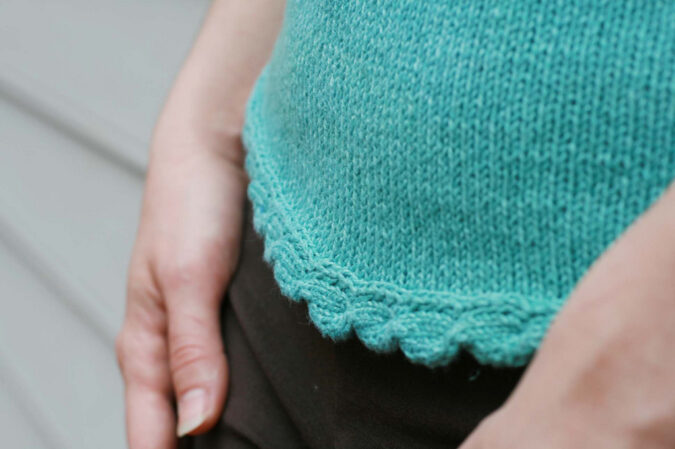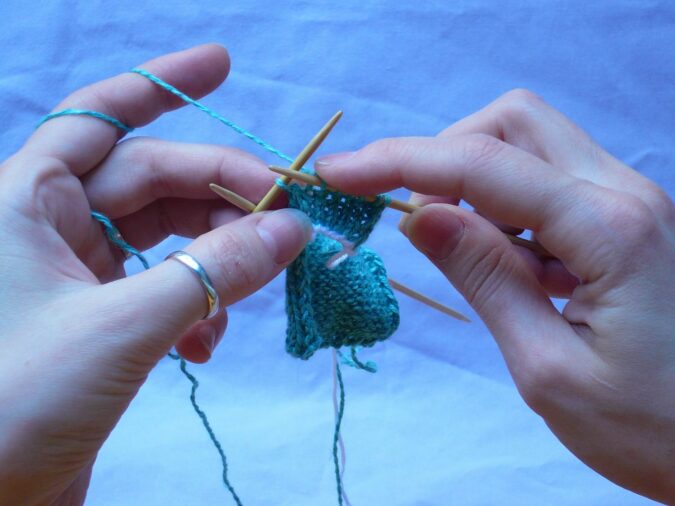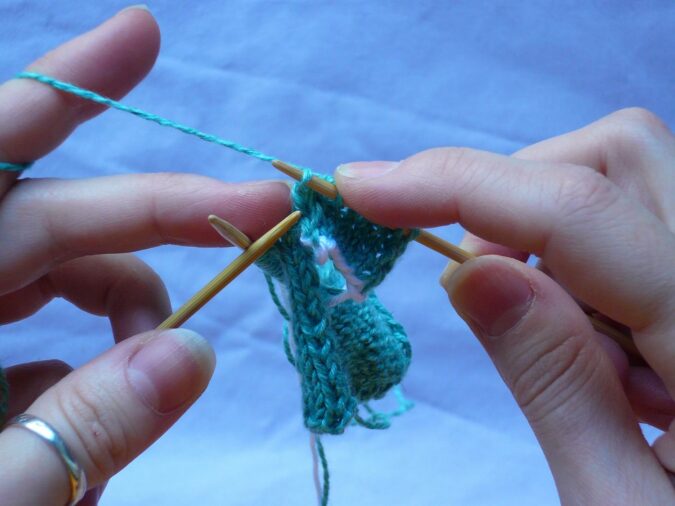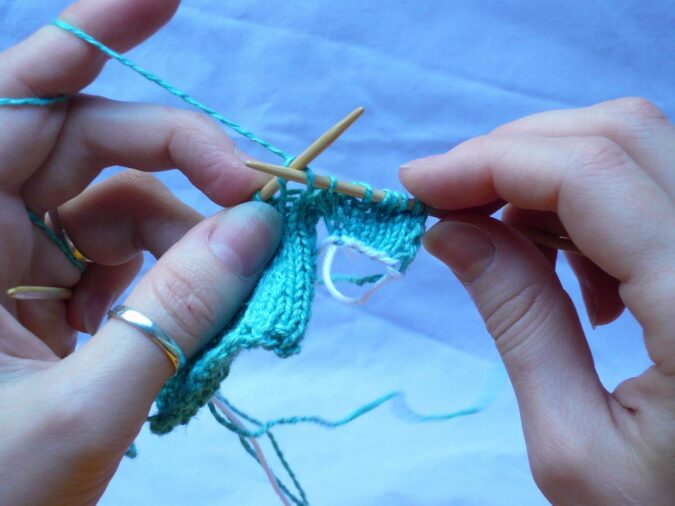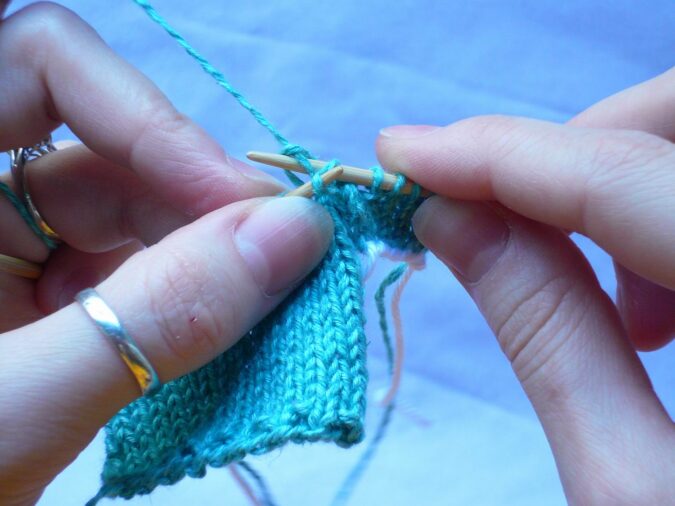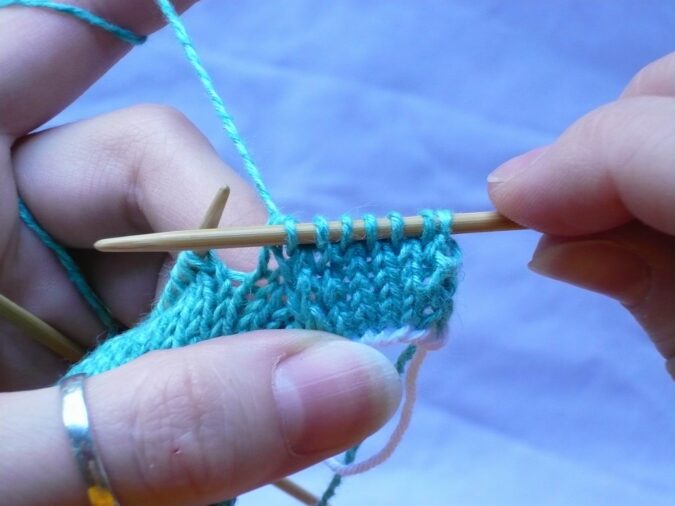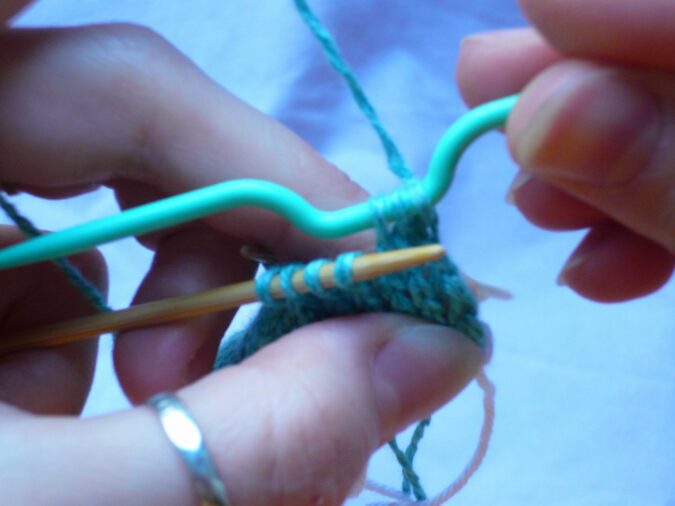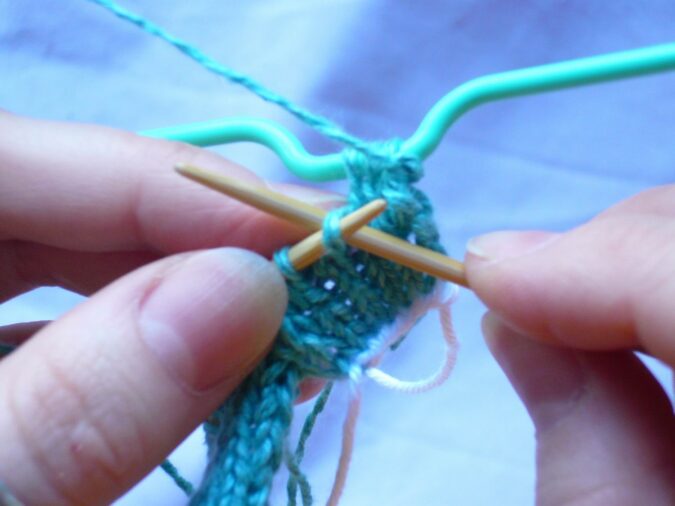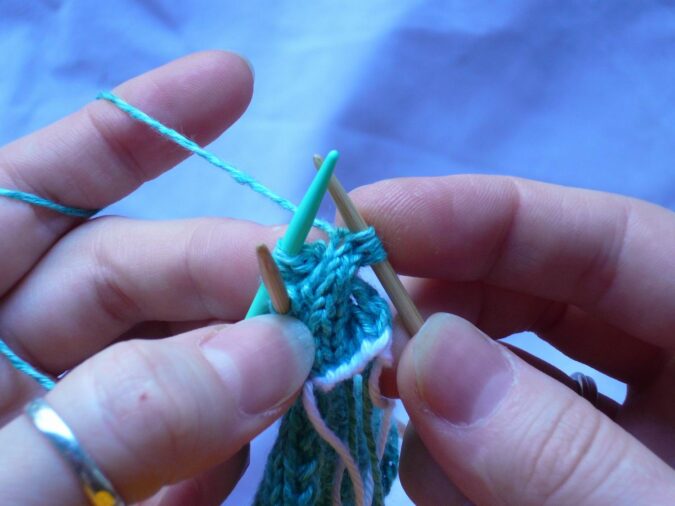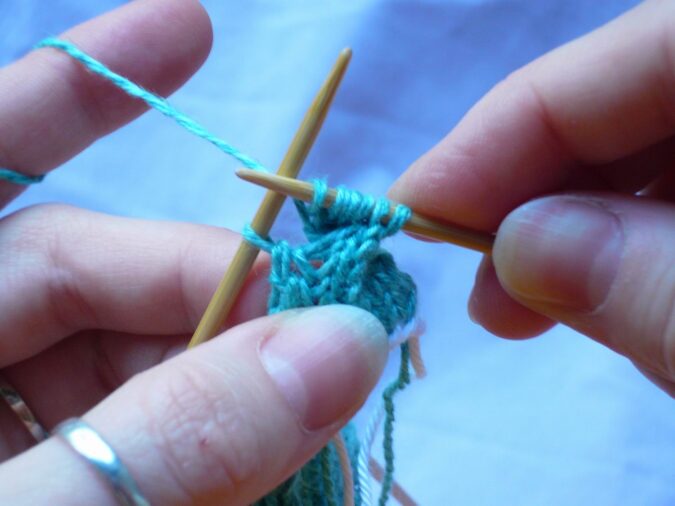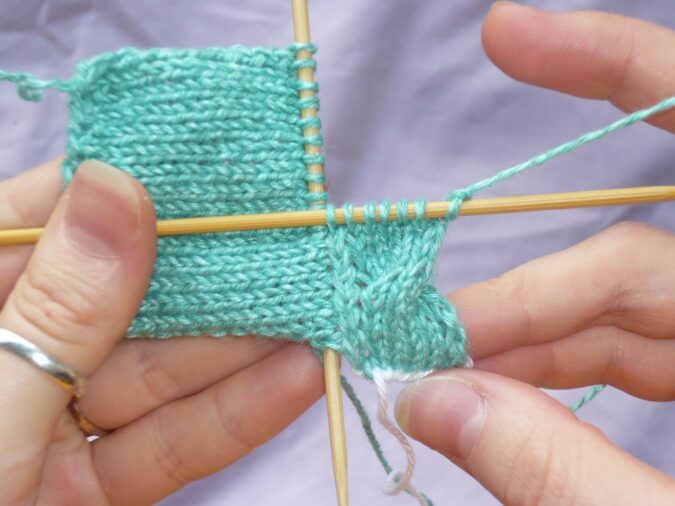I want to share a great joy of mine, of being published in Interweave Knits magazine, this is my second design for them and I am really pleased how it turned out. I want to publicly thank Eunny Jang and Lisa Shroyer for dealing with my difficult situation at a time to have this out of me. This experience was utterly amazing, because I took so much from it, being challenged to be presented with a wonderful opportunity at the most complex time of your life is something indescribable, but this is what you call life . As trying to motivate yourself regardless that things that needed to be done and testing self-discipline no matter what. I didn’t come out all bright and shiny, some tasks failed, some I persevered through. And here you can see the outcome. I am going to write more about Petal Halter with a tutorial later. But for now, I give you Akomeogi Tunic, which in translation from Japanese means “folding fan”. To be honest, I had the sketch and yarn for this garment since June 2007. But what all of you get to see in a finished project is a bit processed from this original sketch.

And here it is, photoshoot from Interweave Knits Summer 2009. I am so grateful to the editors and stylists and the photographer who took so many details pictures.




photo courtesy of Interweave Knits website
And yesterday, as Knitting Daily presented their galleries, I saw it being modeled by many different ladies: ages and figure and ease.
So head over there and make a judgement for yourself.
On a personal note, I learnt that I enjoyed working with linen yarn to such extent that I have acquired a new object of desire. Linen in all kinds and weights. It is perfect for sticky and changeable DC summers. This particular design reflects my taste and my desire for knitwear to carry, some are very wearable and plain, but some boutique pieces that retail for hundreds and hundreds with an oomph to them, the unusual that every woman has and yet to express it. I love expressing mine through what I wear, this is not just a cloth to cover yourself, but also reflect on how you feel. I love fashion and everything about it, it is again a theatre, just a medium for others to percept your real self.
And now, I remember I have Louet and Lin-net linen to play with, hmmm! Possibilities are tasteful!









